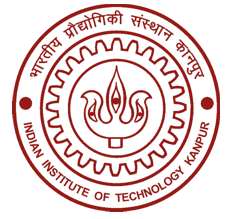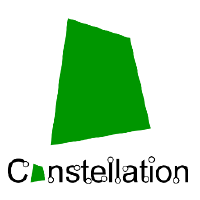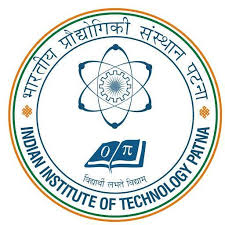I am a PhD student at the Department of Aerospace Engineering at the Indian Institute of Technology, Kanpur. My interests lie broadly in the field of space exploration and robotics. I enjoy learning and building things.

Hi, I'm Arya.
Prime Minister's Research Fellow (PMRF)
Research
In recent years, there has been a significant increase in lunar exploration missions, driven by the efforts of governments, private companies, and international collaborations. The Moon has garnered substantial attention due to its potential as a stepping stone for deep space exploration and a source of valuable resources. Nations such as India, Russia, the United States, and China have been actively pursuing lunar missions, and initiatives like NASA's Artemis and the Lunar Gateway highlight the global effort to establish a sustainable presence on the Moon.
The complexity of planning lunar missions lies in the intricate gravitational forces of the Earth, Moon, and Sun, which lack a closed-form analytical solution beyond the classical two-body problem. To design more intricate and fuel-efficient trajectories, the Circular Restricted Three-Body Problem (CR3BP) is a valuable model. In this model, three bodies are considered: two massive ones, like the Earth and Moon, in fixed circular orbits, and one massless body, such as a satellite, moving within their gravitational field. Despite lacking an analytical solution, the CR3BP offers better insights into lunar orbits, leading to the identification of unique orbits like the Near-Rectilinear Halo Orbit (NRHO). The NRHO is of strategic importance, especially for NASA's Lunar Gateway project, as it provides continuous access to the lunar surface, facilitating scientific research, resource exploration, and serving as a hub for future lunar and deep space missions.


The trajectory design for lunar missions and station-keeping is a complex challenge, particularly when using low-thrust propulsion systems. This requires the use of numerical optimization methods such as multiple shooting. However, it is difficult to find good initial estimates for these methods. Without a good initial estimate, these algorithms will take a long time to converge, or might converge at a local extremum. Recently, Artifical Neural Networks have emerged as a good tool for solving difficult non-linear problems. Hence my research topic is on "Machine-Learning based Methods for Trajectory Design of Low-Thrust Spacecraft in Cis-Lunar Space". This fusion of numerical methods and machine learning techniques offers a promising approach for addressing the intricacies of lunar mission planning and execution.
Publications
- P. Dubey, A. Das, D.K. Giri "Bald Eagle Search Optimization based Bioinspired Spacecraft Rendezvous- Docking and Space Debris Mitigation" International Astronautical Congress 2022, Paris, France
- V. Saini, A. Das, C. Sikarwar, P. Dubey, D. K. Giri "Design and Development of Spacecraft Simulator Testbed: Platform for Validating Maneuvering Control Strategies in Frictionless Environment" International Astronautical Congress 2022, Paris, France
- A. Das, R. Halder, A. Thakur "Deep Reinforcement Learning-Based 3D Exploration with a Wall Climbing Robot" IEEE TENCON 2021, Auckland, New Zealand
Teaching
As part of my PMRF responsibilities, I perform teaching duties every semester outside my institute. These TA duties have been summarized in the table below:
| Time Period | Organization | Duration | Details |
|---|---|---|---|
| Jan'23 - Apr'23 | NPTEL | 24 hrs | Conducted Q&A sessions for the NPTEL course "Programming in Modern C++" |
| Jan'23 - Apr'23 | CSJM University | 30 hrs | Conducted a workshop on LaTeX |
| Jul'23 - Sep'23 | NPTEL | 24 hrs | Conducted Q&A sessions for the NPTEL course "Programming in Modern C++" |
Experience

Project Associate
Space Dynamics Laboratory
August 2021 - July 2022
I worked at the Space Dynamics and Flight Control Laboratory under Dr. Dipak Kumar Giri. My work consisted of developing a 5-dof frictionless satellite simulator. I primarily worked on the software and simulation aspect of the project.

Google Summer of Code developer
AerospaceResearch.Net
May 2018 - August 2018
In this position I worked on developing an orbit determination software. First we determine a good estimate of a satellite orbit using data from multiple ground stations. Next, we predict the future location and velocity of the satellite. I also worked on a good GUI to visualize the results.
Education

Indian Institute of Technology, Kanpur
Doctor of Philosophy, Aerospace Engineering (Flight Mechanics and Control)
August 2022 - Present
I am pursuing my PhD in Aerospace Engineering in the Flight Mechanics and Control domain. I am a receipient of the PMRF Fellowship through Direct Channel.
Key courses: Flight Stability & Control, Non-linear & Adaptive Control, Space Dynamics-I, Embedded & Cyber Physical Systems, Introduction to Machine Learning, Introduction to Robotics.

Indian Institute of Technology, Patna
Bachelor of Technology, Computer Science and Engineering
August 2017 - May 2021
I had studied computer science at IITP with a focus on robotics. I had participated in numerous activities, societies and projects at university. I was one of the coordinators of NJACK (computer science club). I helped organize classes and club events. I was a team member of the Robocon team. I had also participated in the Inter IIT Tech Meet every year.
Key courses: Deep Learning, Bio-Inspired Robotics, Algorithms, Data Structures, Databases, Operating Systems, Computer Networks, Computer Architecture, Computer Security
Skills
Programming Languages:
- Python
- C++
- Java
- Javascript
Tools and Packages
- OpenCV
- ROS
- NumPy
- Tensorflow
- MATLAB
- Simulink
Others:
- Web Development
- Android Development
- Orbital Mechanics